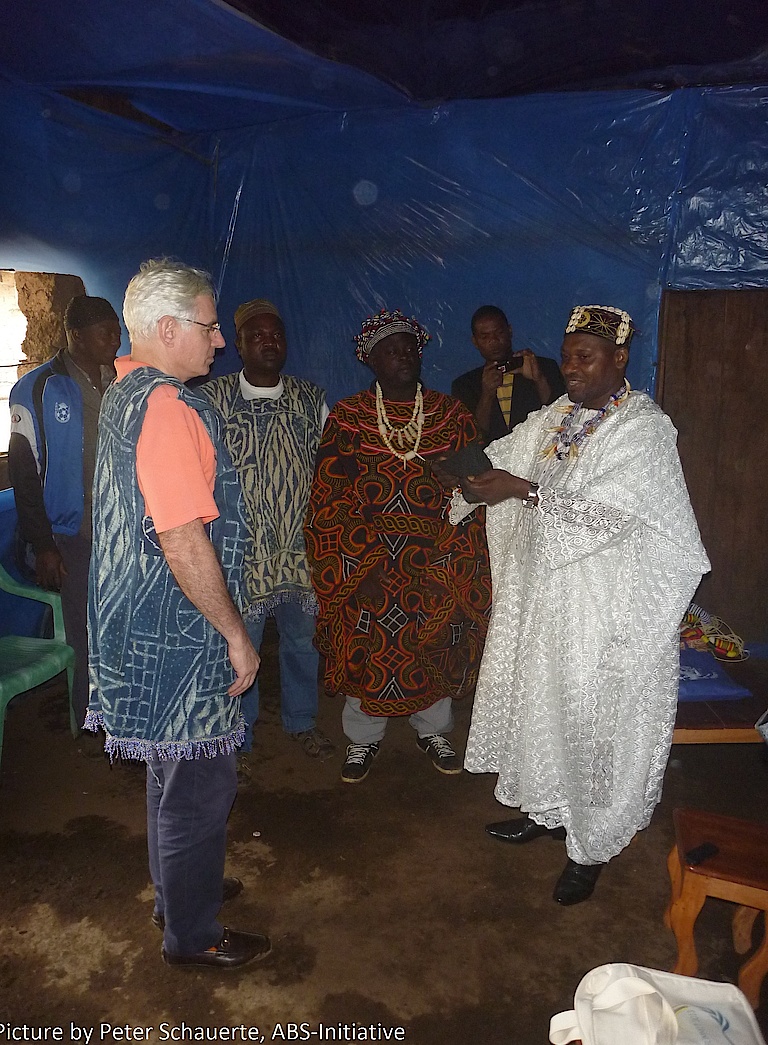To be successful, the Nagoya Protocol requires effective implementation at the domestic level. This is generally a complex process. It may take months or years for countries to adopt and implement their national rules on ABS.
According to the Nagoya Protocol, ABS rules only apply for cases of “utilization”, which is defined as conducting research and development (R&D) on genetic resources or their compounds, including biotechnology. The guidance provided by the Nagoya Protocol remains very broad by setting only minimum standards. Parties can thus define national measures for ABS relatively freely. This can lead to cases where the scope of national ABS measures cover more uses defined in the Nagoya Protocol.
Each Party to the Nagoya Protocol allocates one institution that serves as the ABS national focal point (NFP), which is usually the first addressee for potential users interested in accessing genetic resources. The NFP provides all regulatory and processual information necessary.
When all access requirements are met and benefit-sharing is agreed upon, the designated competent national authority (CNA) in the providing country issues a permit to grant access to the genetic resources in accordance with domestic regulation.
The key information on the permit will be fed into the ABS Clearing House and now constitutes the internationally recognized certificate of compliance.
Once – often after several years – the user succeeds in developing a market-ready product via R&D on the genetic resource, she contacts the relevant authority (checkpoint) in her country for market approval. The checkpoint sends its communiqué to the ABS Clearing House which again informs the CNA in the providing country.
Now, the providing country can compare the communiqué with the permit and check whether the utilization corresponds with what has been agreed between the user and provider.
In legal terms, intellectual property can potentially be extremely relevant to ABS mechanisms as most R&D based on genetic resources and associated traditional knowledge will eventually be subject to Intellectual Property Rights (IPRs), e.g. through patents.
Within the European Union, the Nagoya Protocol is implemented through the European Regulation 511/2014 which focuses on the compliance measures outlined in the Nagoya Protocol. It requires companies and other organizations engaged in biodiversity-based research and development in Europe to ensure these activities respect ABS requirements in other countries.
The Parties to the CBD adopted the Strategic Plan for Biodiversity 2011-2020 with the purpose of inspiring action in support of biodiversity by all countries and stakeholders. The Strategic Plan is comprised of a shared vision, strategic goals and 20 ambitious targets, collectively known as the Aichi Targets.
To implement the Strategic Plan for Biodiversity 2011-2020, Parties are reviewing their national biodiversity strategies and action plans (NBSAPs), developing national targets, and integrating these national targets into the updated NBSAPs. The NBSAPs reflect varying degrees of compliance with the Nagoya Protocol outcomes.
The same applies to the development and implementation of ABS related policies and regulatory frameworks. Some countries such as South Africa have respective policies/frameworks in place and actually effectuated; Namibia and other countries are pending the last step of adoption while again other countries are still involved in the development process. As with the NBSAPs, the policies and regulatory frameworks vary in the degree of their Nagoya Protocol compliance. The nature of both NBSAPs and ABS related policies and regulatory frameworks have a significant impact on the form of ABS/Nagoya Protocol implementation in the respective countries.
At a global level, negotiations to develop a biodiversity framework for post-2020 are underway. As part of this process, discussions are progressing on goals and targets, as well as indicators to monitor the implementation and impact of the framework. There is still controversy about what can and should be measured on ABS as part of the global biodiversity framework. This is why, UEBT and the ABS Capacity Development Initiative organised an informal exchange to facilitate further reflection and a free and open exchange of views on indicators for ABS that would be practical and meaningful in measuring the true impact of ABS implementation.
The ABS Initiative , BioInnovation Africa and ABioSA are also contributing to the ongoing global processes with their expertise. For instance, they provide substantial input to the issue of Digital Sequence Information (DSI) through publications, a simply explained video and webinars.
Further details
ABS Monitoring
Simply Explained – Films in several languages
ABS - Simply Explained - YouTube – ABS – Simply Explained
ABS Monitoring System - YouTube – ABS Monitoring System – Simply Explained
ABS Monitoring and Compliance – Nagoya provisions, practical experiences and potential solutions - YoTube - Webinar Recording
